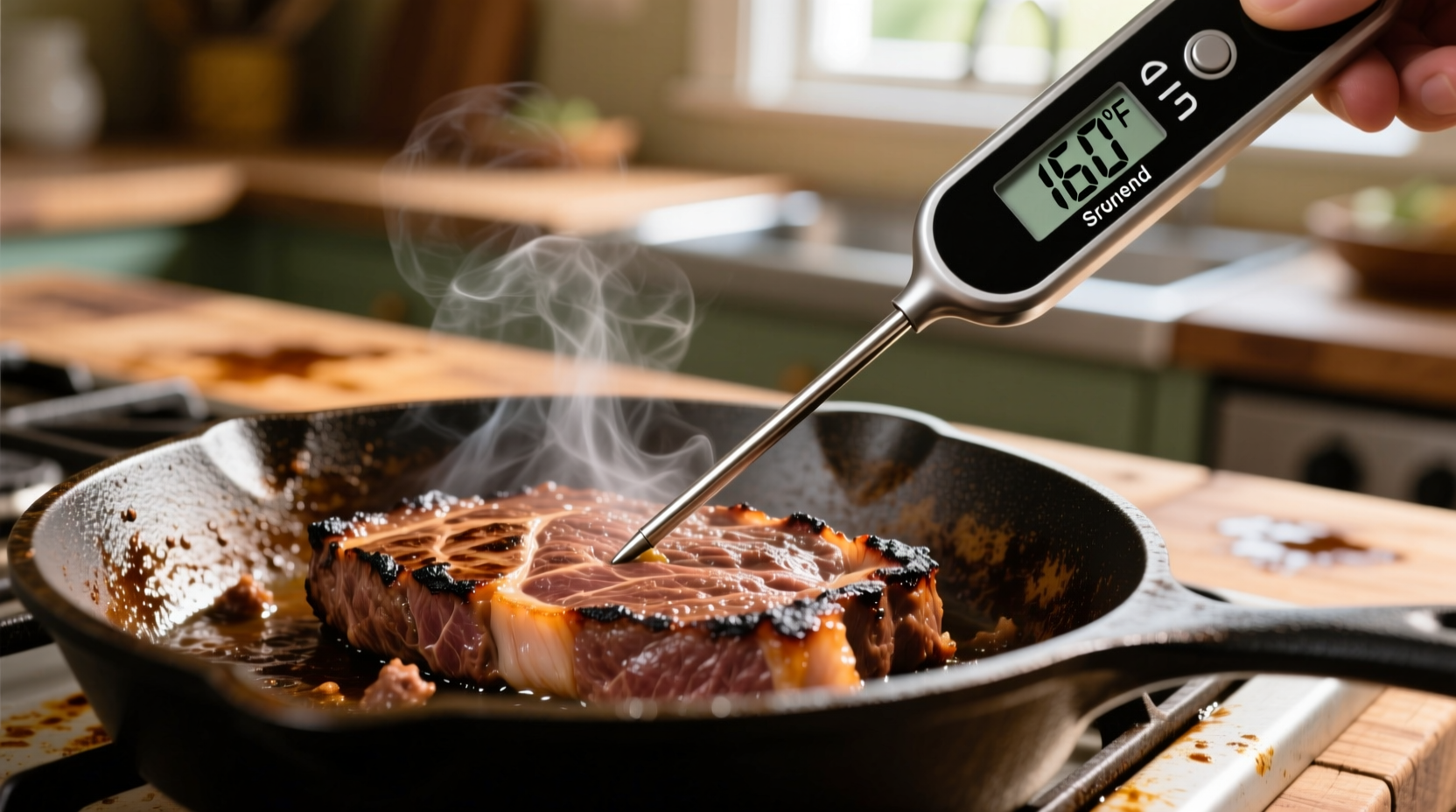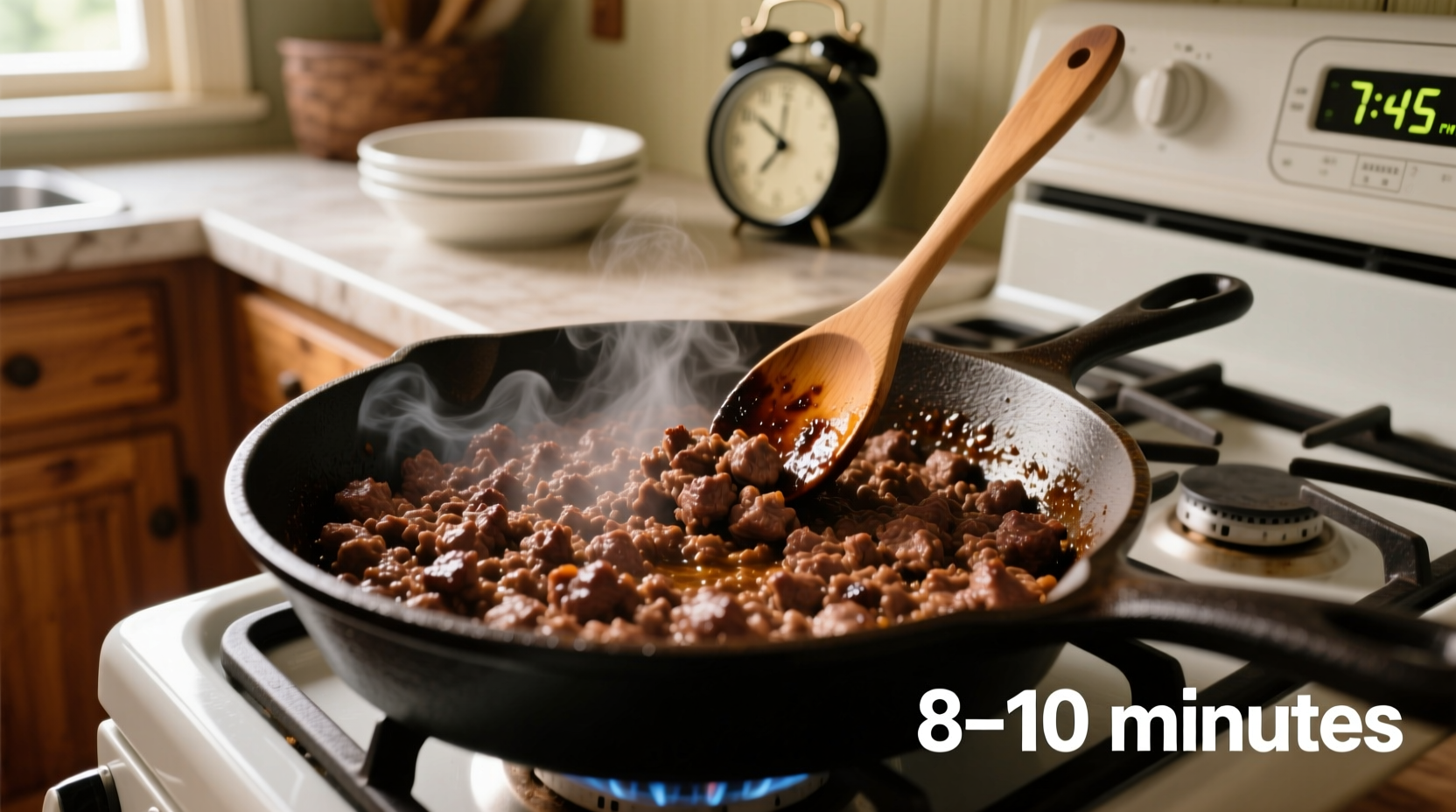Ever wondered why your ground beef sometimes turns out dry or, worse, leaves you questioning if it's truly safe to eat? You're not alone. Millions of home cooks rely on visual cues like color change to determine doneness, but this common practice puts them at risk of foodborne illness. The truth is, proper ground beef cooking isn't about timing alone—it's about precise temperature control backed by food science.
The Critical Temperature Threshold
According to the USDA Food Safety and Inspection Service, ground beef must reach 160°F (71°C) to eliminate dangerous pathogens like E. coli and Salmonella. Unlike whole cuts of meat where surface cooking suffices, grinding distributes potential bacteria throughout the meat, making thorough cooking essential.
| Cooking Stage | Visual Indicator | Internal Temperature | Time (Approx.) |
|---|---|---|---|
| Raw | Bright red, soft texture | Below 40°F | 0 minutes |
| Searing Begins | Surface browning starts | 130-140°F | 2-3 minutes |
| Medium | Mostly browned, some pink | 145-150°F | 5-7 minutes |
| Safe Minimum | Uniform brown, no pink | 160°F | 8-10 minutes |
Why Timing Alone Fails You
That "8-10 minute" guideline? It's merely a starting point. Your actual cooking time depends on multiple variables:
- Pan temperature: A properly preheated skillet (350-375°F) ensures immediate searing
- Meat quantity: Overcrowding drops pan temperature, extending cooking time
- Fat content: Lean blends (90/10) cook faster than regular (80/20)
- Starting temperature: Refrigerated meat adds 1-2 minutes versus room-temperature

Your Step-by-Step Cooking Protocol
Follow this professional-tested method for perfect, safe ground beef every time:
- Prep your thermometer—calibrate it before starting (ice water test: should read 32°F)
- Heat skillet over medium-high heat for 3-4 minutes until water droplets sizzle
- Add meat in a single layer—never press down (releases juices and prevents proper browning)
- Break into chunks after 2 minutes, then let sear another 2 minutes
- Stir occasionally until no pink remains (about 5-7 minutes total)
- Verify temperature in multiple spots with your thermometer
Common Misconceptions Debunked
"I can tell by the color"—this dangerous myth persists despite USDA warnings. Research from the USDA Agricultural Research Service shows ground beef can appear brown before reaching safe temperatures, or remain pink even when properly cooked due to factors like nitrite content in vegetables.
When Time Matters Most: Special Scenarios
Different applications require nuanced timing approaches:
- Tacos or sloppy joes: Cook 1-2 minutes past 160°F for optimal texture
- Meatloaf or burgers: Use slightly lower heat (15-20% longer) for even cooking
- Large batches: Expect 25-30% longer cooking time—cook in portions if possible
- Cast iron vs nonstick: Cast iron retains heat better, reducing cooking time by 1-2 minutes
Food Safety Timeline You Must Follow
From fridge to table, adhere to this critical timeline:
- 0-2 hours: Safe at room temperature (danger zone: 40-140°F)
- 2-4 hours: Consume immediately or discard—bacteria multiply rapidly
- 4+ hours: Discard regardless of appearance or smell
- Leftovers: Refrigerate within 2 hours (1 hour if above 90°F), consume within 3-4 days
Troubleshooting Guide
Fix these common issues:
- Excess grease: Drain after cooking but before temperature check—don't discard before verifying safety
- Sticking to pan: Ensure proper preheating and avoid moving meat too soon
- Uneven cooking: Break into smaller, uniform chunks during initial sear
- Dry texture: Use higher fat content (80/20) or add 1-2 tbsp broth during final minute
Essential Equipment Checklist
Don't gamble with food safety—these tools are non-negotiable:
- Digital instant-read thermometer (tested accuracy within ±1°F)
- Heavy-bottomed skillet (cast iron or stainless steel)
- Metal spatula for proper scraping
- Separate cutting board for raw meat
Can ground beef be safely cooked to medium (145°F)?
No. Unlike whole muscle cuts, ground beef requires 160°F minimum because grinding distributes surface bacteria throughout the meat. The USDA maintains this strict standard for all ground meats due to increased contamination risk.
Why does my ground beef still look pink after reaching 160°F?
This occurs due to myoglobin retention or nitrite reactions from vegetables like onions or tomatoes. The USDA confirms that color is unreliable—always use a thermometer. Pinkness at safe temperatures indicates nitrite presence, not undercooking.
How long should I cook frozen ground beef?
Add 50% more cooking time when starting from frozen. Break into small chunks immediately to prevent steaming. Never thaw at room temperature—cook directly from frozen or thaw in refrigerator for 24 hours before cooking.
What's the fastest way to check ground beef temperature?
Use an instant-read thermometer inserted into multiple spots. For quickest results, take temperature when meat appears mostly browned. Wait 15 seconds for digital readings—don't leave thermometer in while cooking as this affects accuracy.











 浙公网安备
33010002000092号
浙公网安备
33010002000092号 浙B2-20120091-4
浙B2-20120091-4